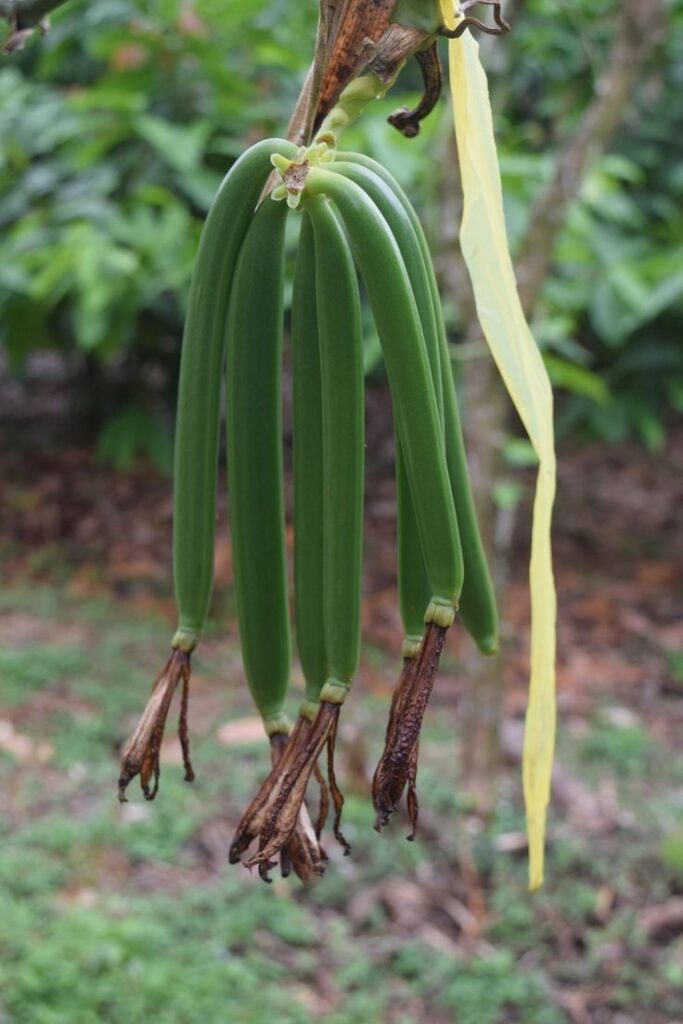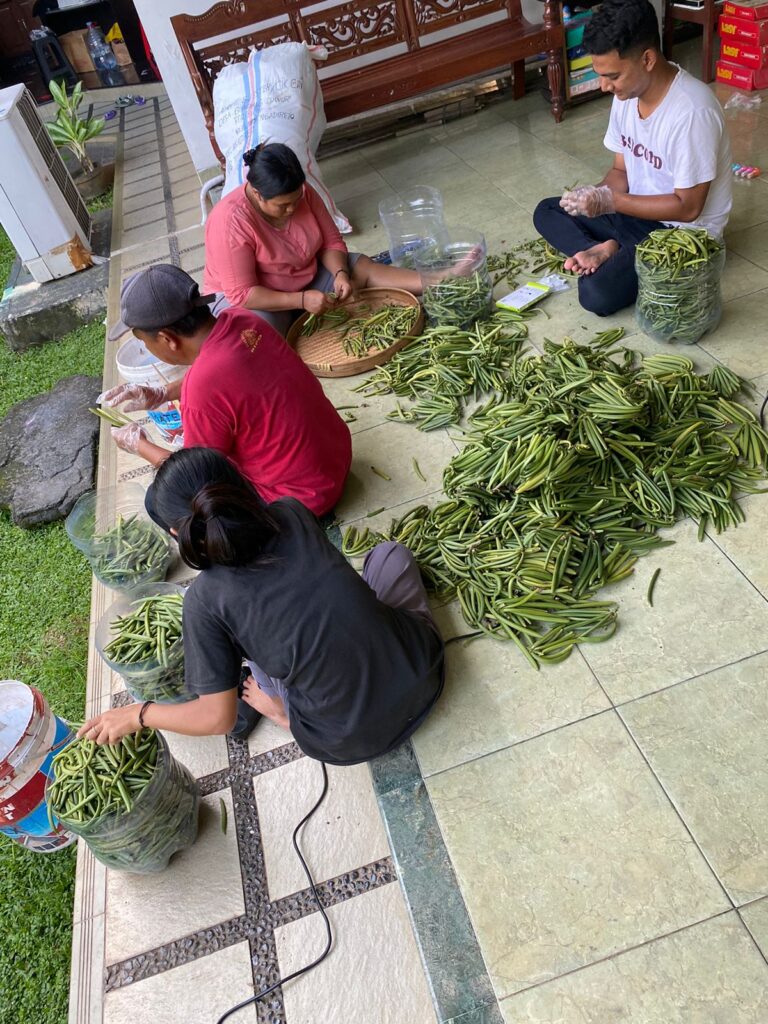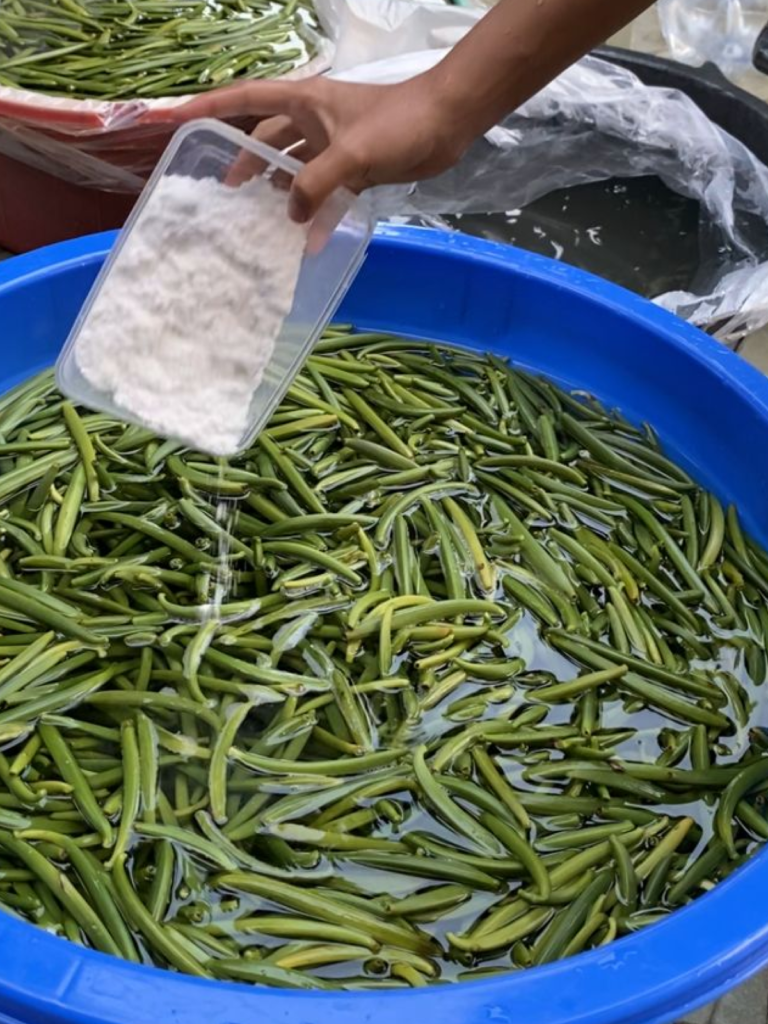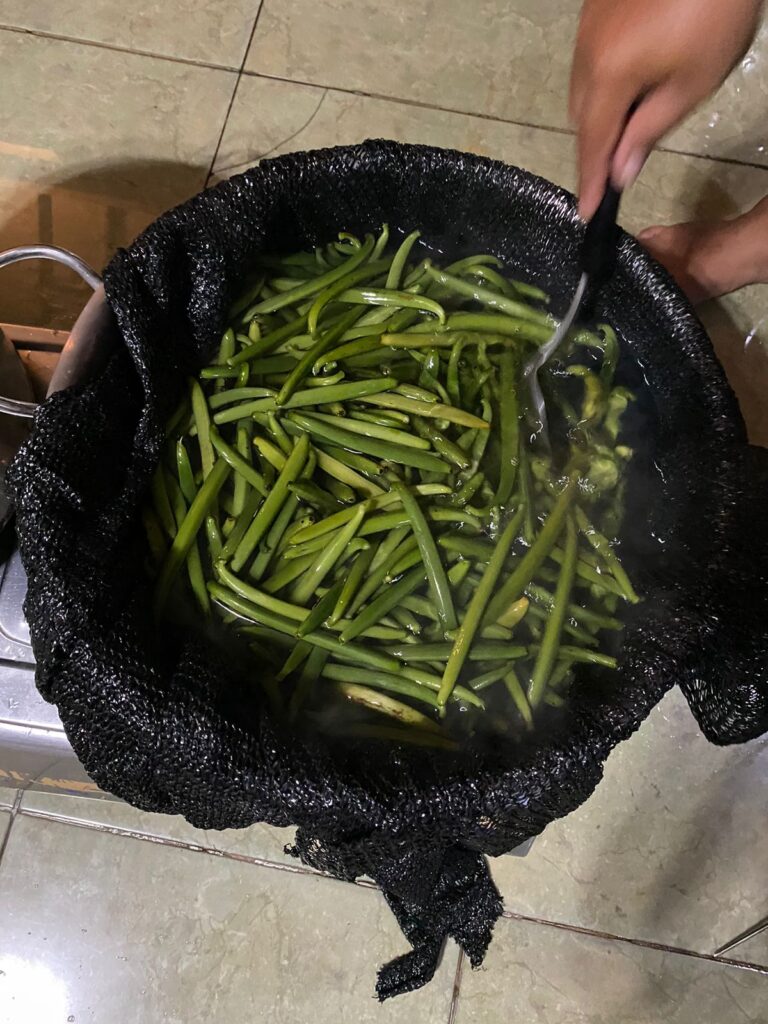VANILLA
Vanilla beans have a rich and fascinating history that spans centuries and continents. Originally cultivated by the indigenous peoples of Mesoamerica, particularly in modern-day Mexico, vanilla has been prized for its unique flavor and fragrance since ancient times. The Totonac people of Mexico were among the first to cultivate vanilla, using it both for culinary purposes and in rituals.
Vanilla was introduced to Europe by the Spanish conquistadors in the early 16th century. Initially used primarily as a flavoring for chocolate drinks, vanilla gained popularity across Europe and eventually worldwide. However, due to the complex pollination process of vanilla orchids, successful cultivation outside of its native regions proved challenging for many years.
It wasn't until the mid-19th century that a breakthrough came with the discovery of hand-pollination techniques, which allowed vanilla to be cultivated in regions beyond Mexico and Central America. This innovation, particularly credited to a slave named Edmond Albius on the island of Réunion (then Bourbon Island), revolutionized vanilla production and made it more widely accessible.
Today, vanilla is cultivated in several tropical regions around the world, including Madagascar, Indonesia, Tahiti, and parts of Africa. Each region offers unique varieties of vanilla beans with distinct flavors and aromas, influenced by local soil, climate, and cultivation methods.
Despite its widespread use in culinary delights such as desserts, beverages, and perfumes, vanilla remains one of the most labor-intensive agricultural crops due to its delicate pollination process and meticulous curing methods. Its enduring popularity and status as the second-most expensive spice after saffron highlight its continued allure and importance in global trade and culture.


Vanilla Planifolia
- Ingredients : 1.5 % vanilin
Flavour : smooth, creamy and rich flavour profileUse for : baked goods, chocolate, cream desserts, beverages, savory dishes and much moreDetails : Gourmet, No Split and No MoldCountry of Origin : IndonesiaShelf Life : 2 YearsPackages : Vacuum Packed with Food Grade Plastic
GRADE A
water content : 25-35%
Vanilin content : 1.5- 2 %
colour : dark brown
size : 18cm up
GRADE B
water content :20- 30%
vanilin content : 1,5- 2%
colour : dark brown
size : 15- 17cm
ALL GRADE
water content :10- 20%
vanilin content : 1- 1,5%
Vanilla Tahitnesis

GRADE A
Water Content 25-35%
Vanilin Content 0.7 -1.5 %
Color Dark Brown
Origin Papua
Size 14- 18cm
GRADE B
Water Content 10-20%
Vanilin Content 0.5 - 1 %
Color Dark Brown - Black
Origin Papua
Size 10- 16cm

8-9 MONTHS
Planting Process

Separation of fruits from the branches. Then, sorting according to their sizes.
Separation of fruits
from the branches.
The process begins with the careful separation of the fruits from the branches to ensure that each fruit is intact and undamaged. Following this initial step, the fruits are meticulously sorted according to their sizes, allowing for a more uniform and consistent final product. This size-based sorting helps in categorizing the fruits for subsequent processing stages, ensuring that each batch is of the highest possible quality and meets the specific standards required for export.

removal of pesticides using natural ingredients.
The washing process
The washing process involves thoroughly cleaning the fruits to remove any dirt, debris, and impurities. This step is crucial for ensuring that the fruits are hygienic and safe for consumption. Additionally, the removal of pesticides is carried out using natural ingredients, which ensures that the fruits are free from harmful chemical residues while preserving their natural flavor and nutritional value.

Boiled in water at 60 to 65 degrees Celsius
Boiling Process
The fruits are carefully separated from the branches to ensure minimal damage. After separation, they are meticulously sorted based on their sizes to ensure uniformity in quality. Following the sorting process, the fruits undergo a thorough washing process. This involves the use of natural ingredients to effectively remove any pesticide residues, ensuring that the fruits are clean and safe for consumption.

Then, sun-dried and dehydrated.
Drying Process
After the boiling process, the fruits are then subjected to a meticulous sun-drying procedure. They are spread out in a clean, sunlit area to allow natural dehydration. This sun-drying method not only helps in preserving the fruits but also enhances their taste and texture, giving them a more natural and robust flavor. Once adequately sun-dried, the fruits undergo further dehydration if necessary, to achieve the optimal moisture content. This ensures that the fruits have a longer shelf life while maintaining their quality and nutritional benefits.
